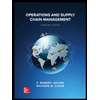PART A: What is the socially optimal number of trains run? PART B: Now suppose that the train operator has property rights. Assuming no negotiation possible, how many trains will she choose to run? PART C: Now suppose that the operator and the rancher can negotiate (and that negotiation costless). What is the least the operator would accept to run the socially optimal number of from part A? What is the most the rancher would offer? PART D: Finally, suppose that in order to negotiate the operator and rancher must hire a law The lawyer's fees are $300. Will they still negotiate? Why or why not?
PART A: What is the socially optimal number of trains run? PART B: Now suppose that the train operator has property rights. Assuming no negotiation possible, how many trains will she choose to run? PART C: Now suppose that the operator and the rancher can negotiate (and that negotiation costless). What is the least the operator would accept to run the socially optimal number of from part A? What is the most the rancher would offer? PART D: Finally, suppose that in order to negotiate the operator and rancher must hire a law The lawyer's fees are $300. Will they still negotiate? Why or why not?
Practical Management Science
6th Edition
ISBN:9781337406659
Author:WINSTON, Wayne L.
Publisher:WINSTON, Wayne L.
Chapter2: Introduction To Spreadsheet Modeling
Section: Chapter Questions
Problem 20P: Julie James is opening a lemonade stand. She believes the fixed cost per week of running the stand...
Related questions
Question
!

Transcribed Image Text:A train track runs through a rancher's land. Each time a train runs on the track, it causes one of the
rancher's cows to run away, resulting in a loss of $200 to the rancher. The following table gives the
train operator's total revenue and costs per number of trains she runs through the land.
Trains run Operator revenue ($) Operator costs
1
350
100
700
200
3
1,050
1,400
400
4
700
1,750
2,100
1,100
1,600
5
6
PART A: What is the socially optimal number of trains run?
PART B: Now suppose that the train operator has property rights. Assuming no negotiation is
possible, how many trains will she choose to run?
PART C: Now suppose that the operator and the rancher can negotiate (and that negotiation is
costless). What is the least the operator would accept to run the socially optimal number of trains
from part A? What is the most the rancher would offer?
PART D: Finally, suppose that in order to negotiate the operator and rancher must hire a lawyer.
The lawyer's fees are $300. Will they still negotiate? Why or why not?
Expert Solution
This question has been solved!
Explore an expertly crafted, step-by-step solution for a thorough understanding of key concepts.
Step by step
Solved in 3 steps with 2 images

Recommended textbooks for you

Practical Management Science
Operations Management
ISBN:
9781337406659
Author:
WINSTON, Wayne L.
Publisher:
Cengage,

Operations Management
Operations Management
ISBN:
9781259667473
Author:
William J Stevenson
Publisher:
McGraw-Hill Education

Operations and Supply Chain Management (Mcgraw-hi…
Operations Management
ISBN:
9781259666100
Author:
F. Robert Jacobs, Richard B Chase
Publisher:
McGraw-Hill Education

Practical Management Science
Operations Management
ISBN:
9781337406659
Author:
WINSTON, Wayne L.
Publisher:
Cengage,

Operations Management
Operations Management
ISBN:
9781259667473
Author:
William J Stevenson
Publisher:
McGraw-Hill Education

Operations and Supply Chain Management (Mcgraw-hi…
Operations Management
ISBN:
9781259666100
Author:
F. Robert Jacobs, Richard B Chase
Publisher:
McGraw-Hill Education


Purchasing and Supply Chain Management
Operations Management
ISBN:
9781285869681
Author:
Robert M. Monczka, Robert B. Handfield, Larry C. Giunipero, James L. Patterson
Publisher:
Cengage Learning

Production and Operations Analysis, Seventh Editi…
Operations Management
ISBN:
9781478623069
Author:
Steven Nahmias, Tava Lennon Olsen
Publisher:
Waveland Press, Inc.